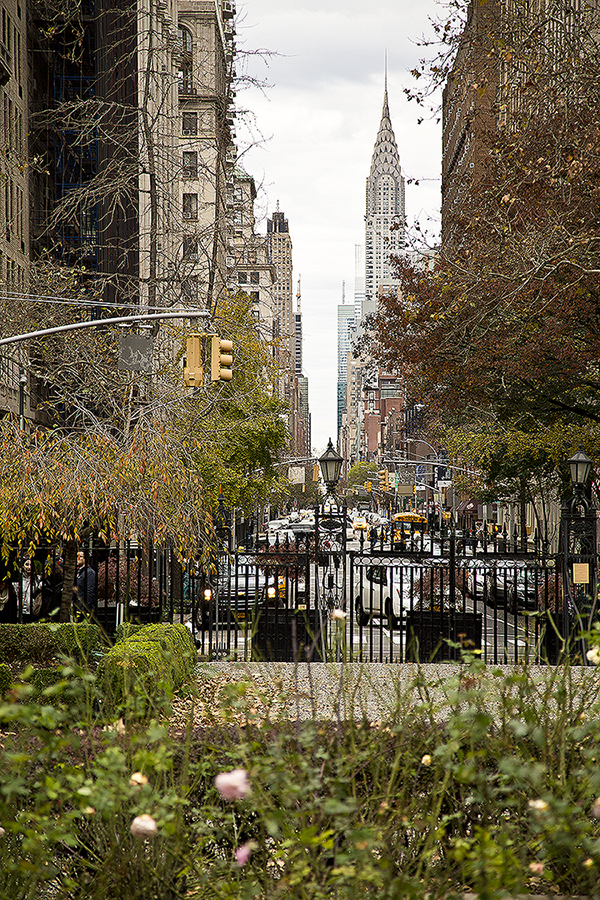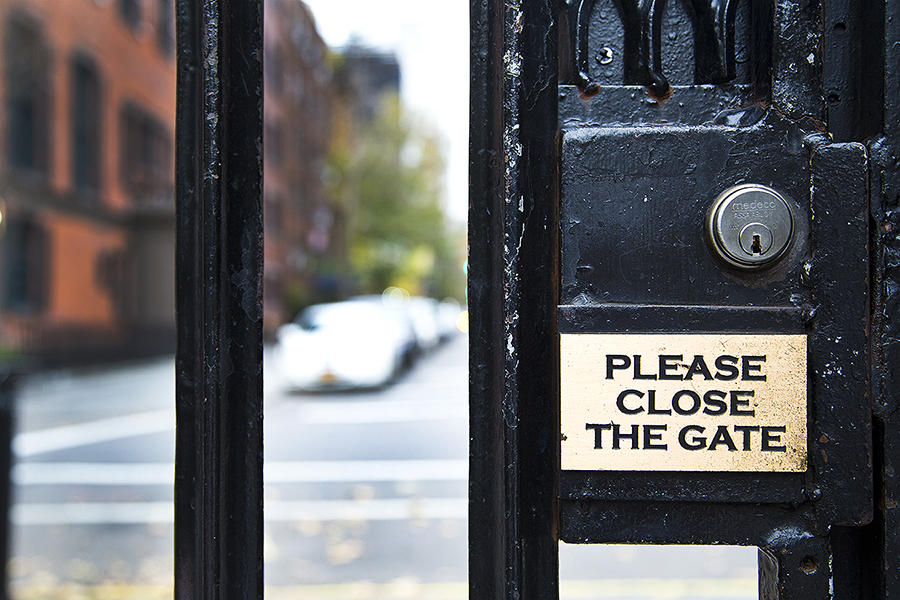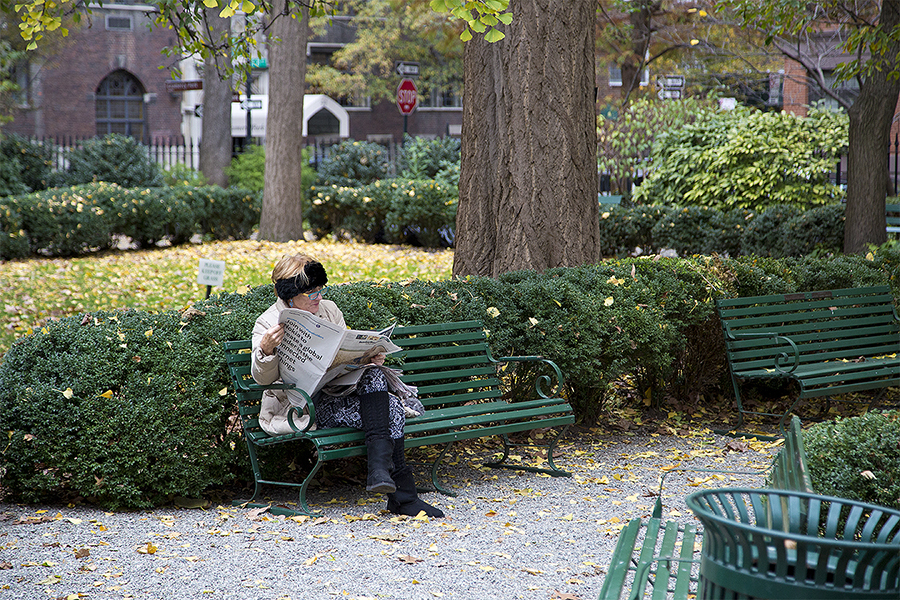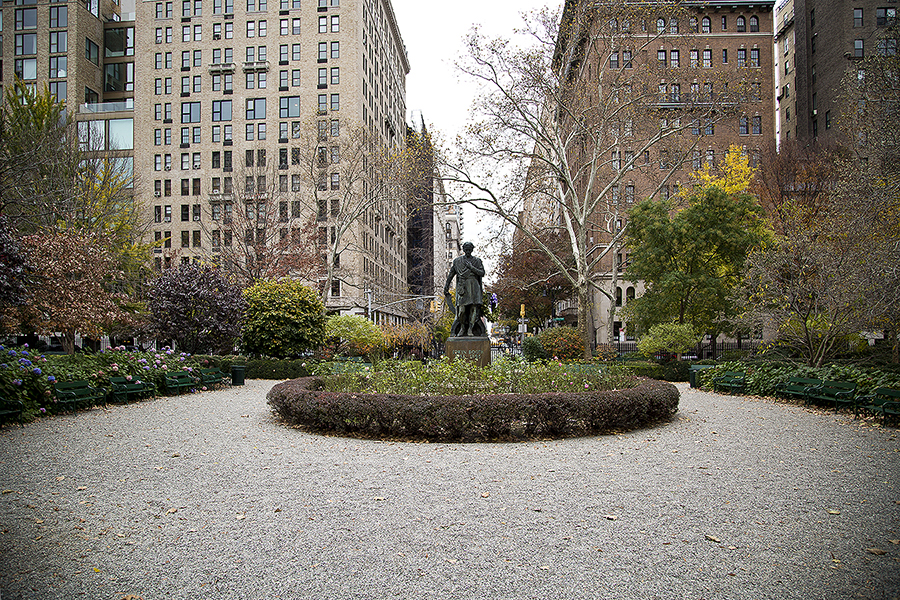Photography and Text by Jacob Bennett
.
GRAMERCY PARK
New York, New York, the city that never sleeps, a bustling playground for those with boundless energy and arguably the metropolitan Mecca of the world. In its most populous borough, Manhattan, there are almost 70,000 people per square mile, which might make one think it would be impossible to find any area of peace and quiet, let alone a two acre oasis of pristine green space, which has remained entirely behind closed doors since its creation in 1831.
However, such a location does indeed exist, almost entirely unchanged, other than the addition of a few pieces of art (including a 30ft Calder mobile), for all of its 184-year history. This urban refuge is Gramercy Park, New Yorks second, and only surviving private park, consistently accessible to a mere 383 people in the entire world. The Park has always served as an enticing draw to property buyers, who have continually been willing to pay a handsome premium for any abode that came equipped with one of the treasured keys.
For those who already have access, the park is treasured for its secluded beauty, a space to read quietly, take an early morning walk (not on the grass of course), or simply sit and reflect on a spring day on one of the ornate benches. However, in recent years the park has become a focus point of reverse-gentrification controversy.
Now, many outsiders, and even some residents, have begun arguing that Gramercy Park should begin opening its doors to the general public. One resident in particular, Aldon James, president of The National Arts Club, has caused quite a stir on a number occasions after breaking several of the parks laws, including exceeding a limit of guests set at 5 people and breaking into the park during scheduled maintenance.
During one of his outbursts, James was observed defiantly marching in with 20 students from a nearby school, who were subsequently escorted out by police, after they were called by the Park Association. This somewhat comic first-world scuffle became even more caricatured as James and the parents of the children sued the Association. When asked about the Park welcoming outside guests, the head of the board of trustees commented that it was at least “open on Christmas Eve”.
Though this microcosmic struggle in the heart of New York might seem trivial to most, it does play into the larger story of New Yorks evolving neighborhoods and the potential loss of tradition and charm in some of the cities most iconic locations. For now, the residents of the park can rest easy as the black iron gates remain firmly locked, but changing times may see a more open atmosphere in the upper-class heart of Gramercy.
Photography and Text by Jacob Bennett, Copyright 2015
.
About The Author: Jacob Bennett is an Architecture major and senior at the University of Pennsylvania. Class of 2016. To read additional articles by Jacob Bennett, go to the search bar at the bottom of the page, type in author’s name: click the search icon.





